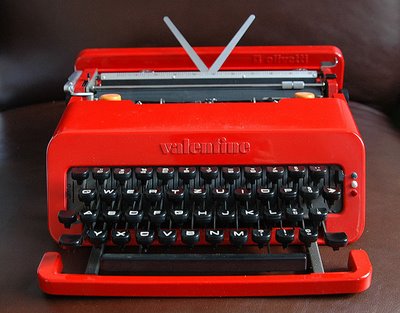The music videos of today are an odd bunch. When you watch a rap video for example, all you see is well-endowed women in overly provocative outfits. Rappers mouths are filled with gold teeth and their bling is bright. I'm pretty sure that the last thing on their mind is showing typokinetic graphics in their videos.
And what about the other videos like rock or emo? These usually showcase some kind of dramatic narrative about love or loss and blah blah blah. There is pretty much no type whatsoever incorporated into these videos. And why, do you ask? Because IT'S NOT THAT IMPORTANT.
Think about when typokinetic videos were introduced: the '60s. This was a time when music was experimental and certain bands and groups were tying to break away from the norm in order to create new sounds. Perhaps typography was incorporated into Bob Dylan's song "Subturranean Homesick Blues" because it went along with the feeling of that particular musical era. It was experimental and it sounds like it worked in that respect. It seems like it was a unique way to interpret the lyrics.
Perhaps typokinetic videos aren't utilized in todays music because music artists and industries have other priorities in mind. We are a very consumer driven society. Music videos can be viewed as a vehicle to sell an album. Typokinetic videos seem like they would be creative. Creative in a sense that the words are being used to represent lyrics or a stream-of-consciousness thinking. But really, music videos these days (on MTV) aren't really about being creative.
There was one quotation in particular that really bothered me. Peter Hall says, "We'll look back at these early days of the music video genre and recognize that a few pioneearing typokinetic gems lurked amid the trash." Is he trying to say that only the videos that use typography are pioneering? I disagree. There are plenty of great videos that don't use typography and are still pioneering. For example: AHA's "Take on Me." Need I say more?
And what about the other videos like rock or emo? These usually showcase some kind of dramatic narrative about love or loss and blah blah blah. There is pretty much no type whatsoever incorporated into these videos. And why, do you ask? Because IT'S NOT THAT IMPORTANT.
Think about when typokinetic videos were introduced: the '60s. This was a time when music was experimental and certain bands and groups were tying to break away from the norm in order to create new sounds. Perhaps typography was incorporated into Bob Dylan's song "Subturranean Homesick Blues" because it went along with the feeling of that particular musical era. It was experimental and it sounds like it worked in that respect. It seems like it was a unique way to interpret the lyrics.
Perhaps typokinetic videos aren't utilized in todays music because music artists and industries have other priorities in mind. We are a very consumer driven society. Music videos can be viewed as a vehicle to sell an album. Typokinetic videos seem like they would be creative. Creative in a sense that the words are being used to represent lyrics or a stream-of-consciousness thinking. But really, music videos these days (on MTV) aren't really about being creative.
There was one quotation in particular that really bothered me. Peter Hall says, "We'll look back at these early days of the music video genre and recognize that a few pioneearing typokinetic gems lurked amid the trash." Is he trying to say that only the videos that use typography are pioneering? I disagree. There are plenty of great videos that don't use typography and are still pioneering. For example: AHA's "Take on Me." Need I say more?

